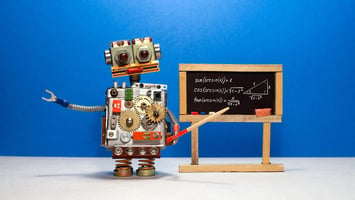Engineers face a constant barrage of competing priorities from customers, co-workers, managers, and...
Innovations in Drone Technology
Innovation in drone (a/k/a/ unmanned aerial vehicle or “UAV”) technology has occurred at a rapid pace in the last 5 years. Cheaper and faster delivery has been one major catalyst for the heightened interest, especially among customer-centric, internet-based companies. Amazon made its first drone delivery in 2016 and other companies are getting in the game. According to research from Intelligent Automation, customers can expect 620,000 drone shipments by 2022. Package deliveries are not the only use for UAVs, by any means. Drones are in use currently in fire-fighting to reduce the risk to human firefighters, in remote surgical centers to transport supplies, and in medicine to meet an immediate need. Some healthcare providers are even experimenting with drone transport of human tissue. UAVs are of keen interest to the military as well. The U.S. Navy, for example, presently deploys drone submarines. Here, we take a look at some current and potential future applications for UAVs and the intelligent automation technology behind this ever-expanding field.
UAV Types and Technology
Most UAVs are made of a composite material, which is composed of fiber-reinforced polymers. Composite material makes UAVs cheaper, lighter, stronger, more maneuverable, and more durable than metal. The first generation of modern drones were small and limited to uses such as aerial photography or the transport of small, lighter-weight objects. We use the term “modern drones” on purpose. Since the word, “drone,” refers to any unmanned aerial vehicle, unmanned balloons such as those used by Austrian soldiers to drop bombs on the City of Venice in 1849, for example, technically were drones.
Today, there are at least 14 different types of drones with more in the works. These include rotor drones, fixed-wing drones, micro drones, tactical drones, reconnaissance drones, combat drones, non-combat drones, target and decoy drones, GPS drones, race drones, and photography drones. Each has evolved from a need to improve existing technology solutions. Readers who are interested in photos and descriptions of each type can click here.
Obviously, each type requires specific technology. UAV technology covers manufacturing materials, aerodynamics, circuit boards, chipset, and software. Racing drones are the smallest, appealing to individual hobbyists with the most basic costing around $300.00. The range tends to be a few miles from the operator and the battery life 10 minutes or less. Reconnaissance drones are among the largest. These UAVs are for military use. They are about 16 ft. long, weigh about 2,200 pounds, are launched from the ground, and have the capability to fly for 52 hours at an altitude of 35,000 feet. The cost ranges from about $200,000 to nearly $4 M. Depending on size, range requirements, and function, UAVs run on batteries, gas, propane, jet fuel, or hydrogen fuel cells. The heaviest payload a drone can handle presently is about 400 kg or 882 lbs.
Unique UAV Applications in use Today
Drones have become an invaluable asset to firefighters in a few ways. First, drones can gather data about the size of the fire, the heat the fire is producing, how far the fire has spread, and even locate people who may be trapped in a burning building. Once the fire is out, drones can record images of the damage to assist with rebuilding efforts and insurance claims.
In the construction industry, drones can survey building sites, get an overview of progress in constructing a building, and assist with inspections, especially of tall structures where inspections by humans required scaffolding and harnesses. With GPS, 4k cameras, sensors, and peripherals, drones can produce clear pictures that companies can use for marketing purposes. Real estate firms are using them for aerial views of the property and the structure. In the healthcare, industry drones deliver essential medical items such as pharmaceutical items, vaccines, and other supplies in several countries. To support conservation efforts, drones can aid in the assessment and management of forests and animals.
Imagining the Future of Drone Applications
Most countries were ill-prepared for the COVID pandemic. The good news is that in the postmortem, there is much focus on preparation and remediation of potential future global catastrophes. One of the first applications technologists suggested is the use of drones for social distancing. Another is drone delivery of medicine, food, and water for people in quarantine. A third is to equip drones with sensors to spot signs of illness like elevated temperatures and coughing. Expect to see drones in use to transport supplies from docks to ships at sea to reduce costs associated with using small vessels to restock ships. New monitoring applications will allow companies to identify bottlenecks in the movement of goods, enable dock operators to better manage cargo and get a more accurate picture of what cargo is on hand, and allow for more accurate and faster inventory checks. Companies have only recently engaged drones to inspect equipment for safety issues and the overall condition of facilities. To improve safety and security of facilities such as rail yards and other sprawling facilities, drones with loudspeakers and infrared cameras can detect movement at night. Advancements in computer vision technology will result in an even higher level of accuracy.
Any speculation of the future of drone applications and technology is, at best, an educated guess. As the exponential growth of technology continues, other drone applications not yet envisioned will become a reality in the not-too-distant future.



